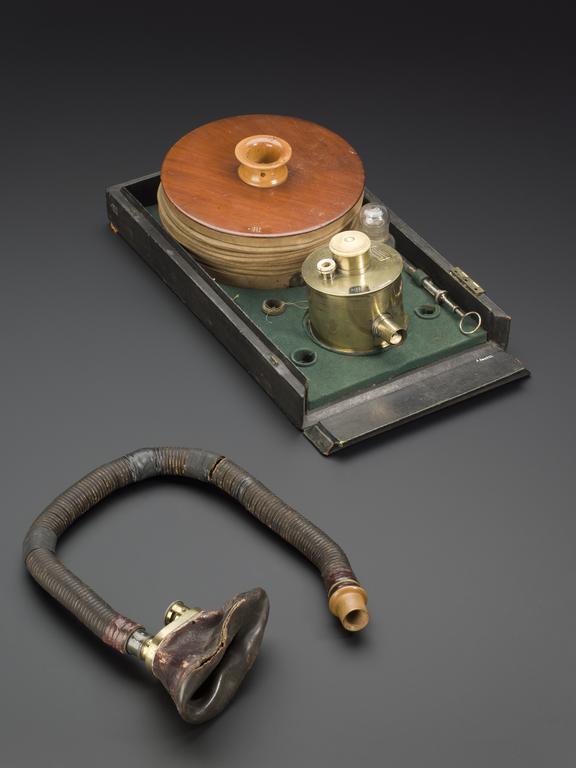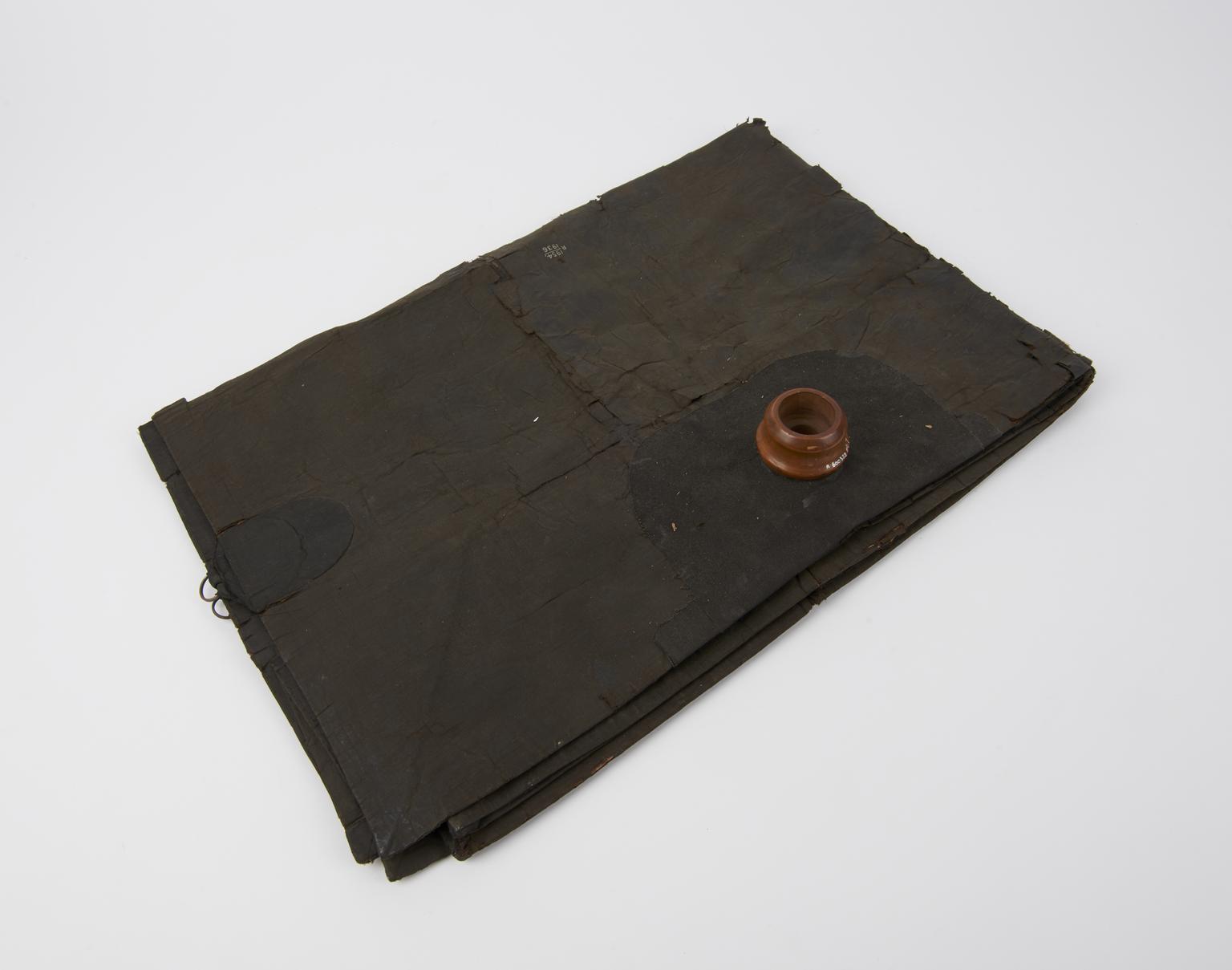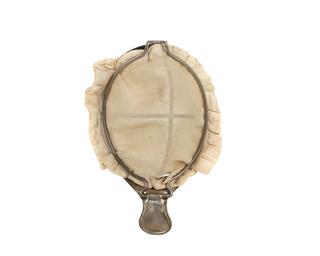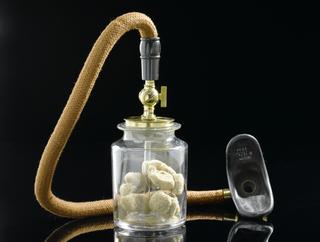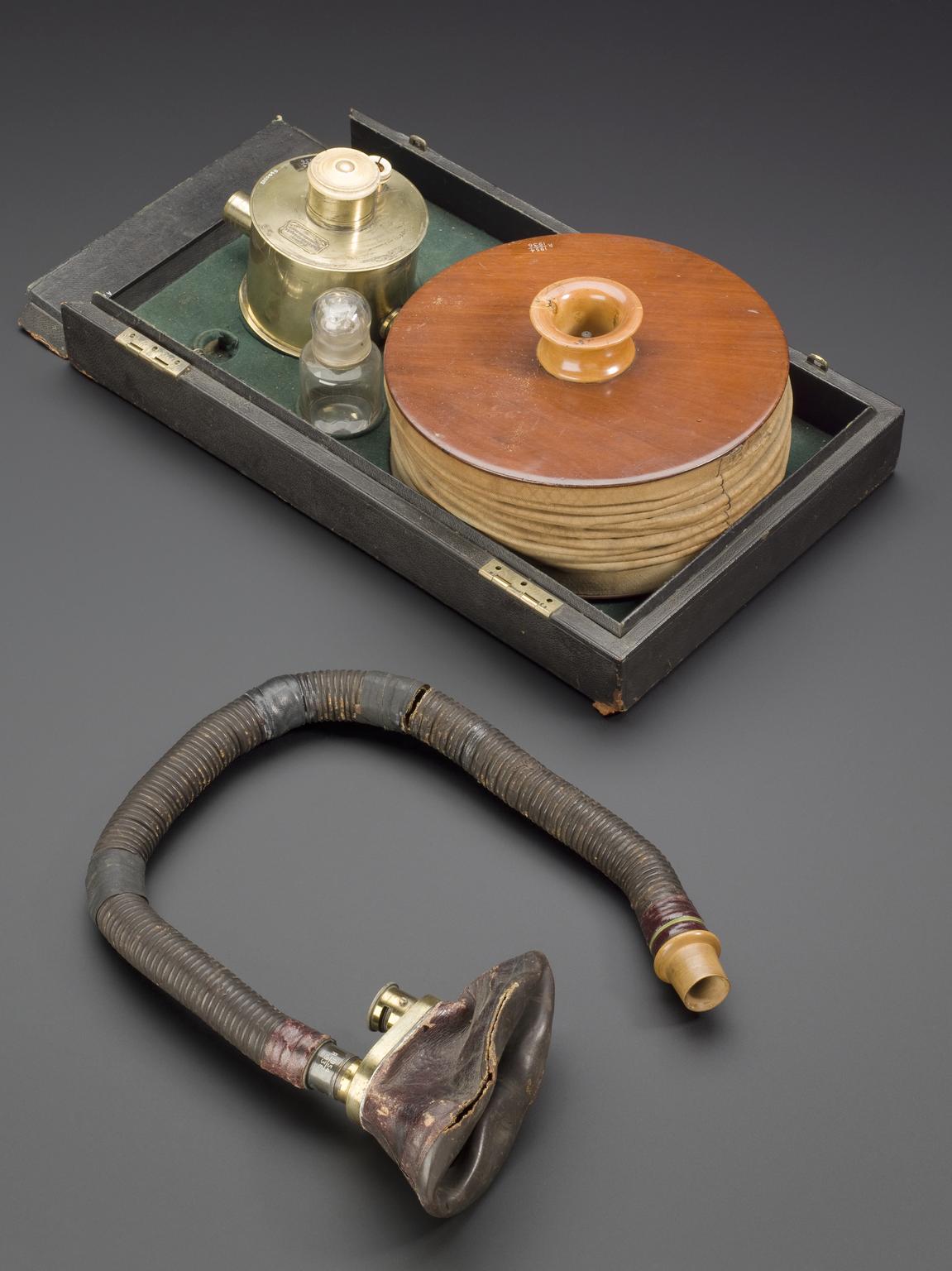
Face mask for Clover's chloroform inhaler
Face mask for use with Clover's chloroform inhaler, by Barth and Co.
More
Joseph Thomas Clover (1825-1882) invented the inhaler with which this face mask was used. The inhaler was used for chloroform anaesthesia.
Inhaling the fumes of anaesthetic was the preferred way of numbing the patient to perform painful surgical procedures. The patient breathed in the vapour through this face mask.
- Measurements:
-
overall: 70 mm x 310 mm x 340 mm, .526 kg
- Materials:
- leather , brass (copper, zinc alloy) , wood (unidentified) and cotton (textile)
- Object Number:
- A600332 Pt1
- type:
- anaesthetic mask
- Image ©
- The Board of Trustees of the Science Museum




